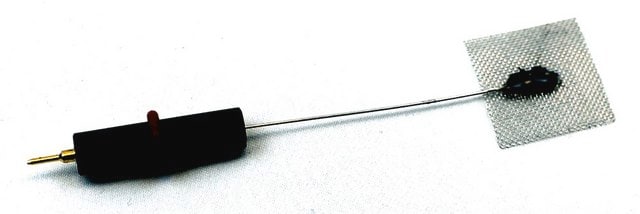349321
Platinum
foil, thickness 0.25 mm, 99.99% trace metals basis
Synonym(s):
Platinum element
Sign Into View Organizational & Contract Pricing
All Photos(1)
About This Item
Empirical Formula (Hill Notation):
Pt
CAS Number:
Molecular Weight:
195.08
EC Number:
MDL number:
UNSPSC Code:
12141734
PubChem Substance ID:
NACRES:
NA.23
Recommended Products
Quality Level
assay
99.99% trace metals basis
form
foil
resistivity
10.6 μΩ-cm, 20°C
thickness
0.25 mm
bp
3827 °C (lit.)
mp
1772 °C (lit.)
density
21.45 g/cm3 (lit.)
SMILES string
[Pt]
InChI
1S/Pt
InChI key
BASFCYQUMIYNBI-UHFFFAOYSA-N
Related Categories
General description
Platinum foils may be used to fabricate multi-electrode spiral nerve cuffs. It was found to be the most active catalyst in the kinetic study of catalytic oxidation of alkanes over platinum foils.
Quantity
3.5 g = 25 × 25 mm; 14 g = 50 × 50 mm
Storage Class
13 - Non Combustible Solids
wgk_germany
nwg
flash_point_f
Not applicable
flash_point_c
Not applicable
Choose from one of the most recent versions:
Already Own This Product?
Find documentation for the products that you have recently purchased in the Document Library.
Customers Also Viewed
Structure characterization of platinum foil for neural stimulating electrodes
Peclin P, et al.
Bio-medical materials and engineering, 24, 1827-1835 (2014)
Kinetic study of the catalytic oxidation of alkanes over nickel, palladiium and platinum foils
Aryafar M and Zaera F
Catalysis Letters, 48, 173-183 (1997)
Yao-Hsuan Tseng et al.
Biochimica et biophysica acta, 1830(6), 3787-3795 (2013-04-02)
Traditional antibacterial photocatalysts are primarily induced by ultraviolet light to elicit antibacterial reactive oxygen species. New generation visible-light responsive photocatalysts were discovered, offering greater opportunity to use photocatalysts as disinfectants in our living environment. Recently, we found that visible-light responsive
Hiroaki Akamatsu et al.
Japanese journal of clinical oncology, 43(6), 664-668 (2013-04-16)
Interstitial lung disease associated with gefitinib is a critical adverse reaction. When geftinib was administered to EGFR-unknown patients, the interstitial lung disease incidence rate was approximately 3-4% in Japan, and usually occurs during the first 4 weeks of treatment. However
Wei Sun et al.
Materials science & engineering. C, Materials for biological applications, 33(4), 1907-1913 (2013-03-19)
In this paper a platinum (Pt) nanoparticle decorated graphene (GR) nanosheet was synthesized and used for the investigation on direct electrochemistry of myoglobin (Mb). By integrating GR-Pt nanocomposite with Mb on the surface of carbon ionic liquid electrode (CILE), a
Articles
Combinatorial Materials Science identifies breakthrough materials through systematic exploration, aiding material discovery.
Our team of scientists has experience in all areas of research including Life Science, Material Science, Chemical Synthesis, Chromatography, Analytical and many others.
Contact Technical Service
